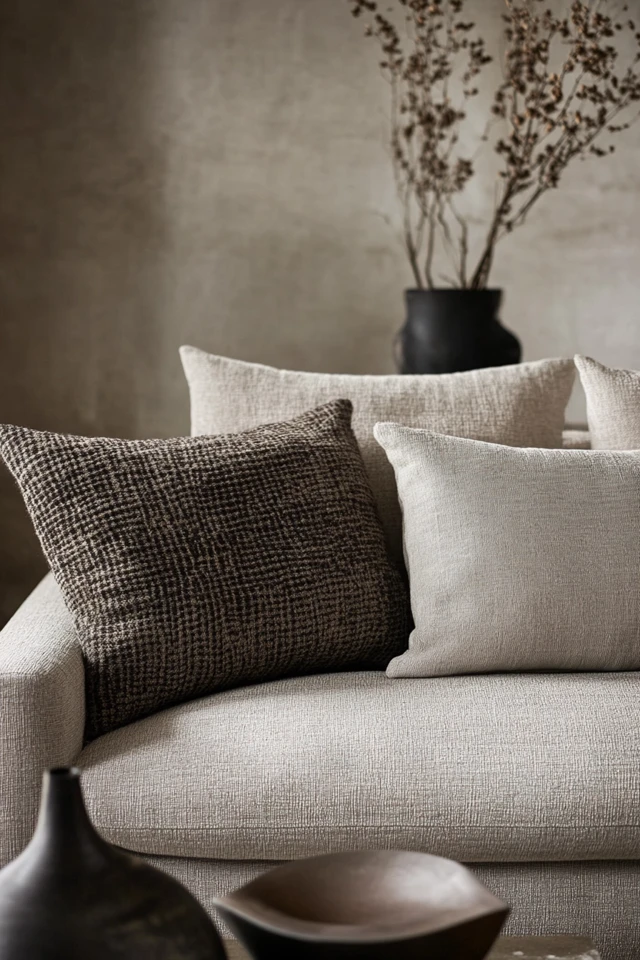Introduction
The minimalist sofa is the unsung hero of modern interiors. With its clean lines, neutral tones, and versatile design, it serves as the perfect canvas for intentional styling. I’ll never forget the first time I styled my own minimalist sofa. It was a simple, gray, low-profile piece that initially felt too plain. But once I layered it with carefully chosen accessories—a textured throw, a pair of complementary pillows, and a sleek side table—it became the centerpiece of my living room.
Styling a minimalist sofa is all about balance. Instead of overwhelming the space with too many accessories, the goal is to enhance the sofa’s simplicity with purposeful choices. In this guide, I’ll show you how to add personality, texture, and functionality to your minimalist sofa while keeping your space uncluttered and cohesive.
Why Styling a Minimalist Sofa Matters
Key Benefits
- Adds Personality: Accessories give your sofa character without compromising its minimalist aesthetic.
- Enhances Comfort: Throws and cushions make the sofa more inviting and practical.
- Defines Your Style: Thoughtful styling reflects your taste and ties the room together.
- Maintains Simplicity: Intentional choices ensure the sofa remains the focal point without feeling cluttered.
1. Start With a Neutral Base
Why It Works
A minimalist sofa in a neutral tone provides the perfect backdrop for layering accessories.
How to Do It
- Choose a sofa in shades like gray, beige, white, or taupe.
- Opt for a clean-lined design with simple legs and minimal detailing.
- Keep the base neutral to allow your accessories to stand out.
- Avoid sofas with heavy patterns or bold colors that may overpower the space.
2. Layer With Textured Throw Pillows
Why It Works
Throw pillows add softness and texture, making the sofa feel cozy and approachable.
How to Do It
- Stick to a limited color palette that complements the sofa and overall room design.
- Use pillows in varying textures, such as linen, velvet, or woven fabrics, to create depth.
- Pair solid-colored pillows with subtle patterns like stripes or tone-on-tone designs.
- Limit the number of pillows to avoid overcrowding—two to four is usually ideal for minimalist styling.
3. Add a Minimalist Throw
Why It Works
A throw blanket adds warmth and visual interest without overwhelming the sofa’s design.
How to Do It
- Choose a throw in a neutral or complementary color, such as cream, charcoal, or muted pastels.
- Opt for natural materials like cotton, wool, or cashmere for a soft, luxurious feel.
- Drape the throw casually over one arm of the sofa or fold it neatly on the backrest.
- Avoid overly bold patterns or fringe details that may distract from the minimalist aesthetic.
4. Introduce a Statement Coffee Table
Why It Works
A well-chosen coffee table enhances the sofa’s presence and anchors the seating area.
How to Do It
- Choose a coffee table with clean lines and minimalist materials, like glass, wood, or metal.
- Use the table to display a small selection of decor, such as a tray, a book, or a vase with fresh greenery.
- Keep the decor minimal—three to five items are enough to create a balanced look.
- Coordinate the table’s finish with other elements in the room for a cohesive feel.
5. Incorporate Accent Lighting
Why It Works
Lighting highlights the sofa and adds ambiance to the space.
How to Do It
- Use a floor lamp or table lamp with a sleek, modern design to frame the sofa.
- Opt for finishes like matte black, brushed brass, or chrome to maintain the minimalist aesthetic.
- Position the lamp to provide functional lighting for reading or relaxing.
- Avoid oversized or overly ornate lighting fixtures that may clash with the sofa’s simplicity.
6. Style With a Rug
Why It Works
A rug grounds the sofa and creates a defined seating area, enhancing the minimalist layout.
How to Do It
- Choose a rug in a neutral tone or subtle pattern that complements the sofa and room.
- Opt for natural materials like wool, jute, or cotton for a timeless look.
- Ensure the rug is large enough to fit under the sofa’s front legs to create visual balance.
- Avoid overly busy or colorful designs that can detract from the minimalist feel.
7. Add Natural Elements
Why It Works
Plants, flowers, or natural materials soften the look of a minimalist sofa and bring life to the space.
How to Do It
- Place a small potted plant or vase of fresh greenery on the coffee table or side table.
- Use natural textures like wood, stone, or ceramics in your accessories.
- Choose low-maintenance plants, such as succulents or snake plants, to keep things simple.
- Avoid overcrowding the area with too many natural elements—less is more.
8. Use Wall Art as a Backdrop
Why It Works
Artwork behind the sofa adds personality and draws attention to the focal point of the room.
How to Do It
- Choose a single large piece or a curated gallery of simple, modern prints.
- Stick to abstract or monochromatic art for a clean, minimalist look.
- Use simple frames in neutral colors like black, white, or natural wood.
- Hang the artwork at eye level, centered above the sofa for optimal visual impact.
9. Include Functional Accessories
Why It Works
Functional decor, like trays or storage baskets, adds practicality to the sofa area without disrupting the design.
How to Do It
- Place a small tray on the coffee table to hold remotes, coasters, or candles.
- Use a minimalist storage basket next to the sofa for blankets or magazines.
- Opt for accessories in materials like rattan, metal, or leather to complement the minimalist aesthetic.
- Keep functionality and simplicity in mind when choosing these items.
10. Keep It Balanced
Why It Works
The key to styling a minimalist sofa is creating a harmonious and uncluttered look.
How to Do It
- Follow the rule of thirds when arranging accessories to create balance and visual interest.
- Step back and assess the overall composition—remove anything that feels excessive.
- Allow negative space to remain around the sofa and its accessories for a clean, open look.
- Remember that less is more—each piece should serve a purpose or add value to the space.
Picture Gallery
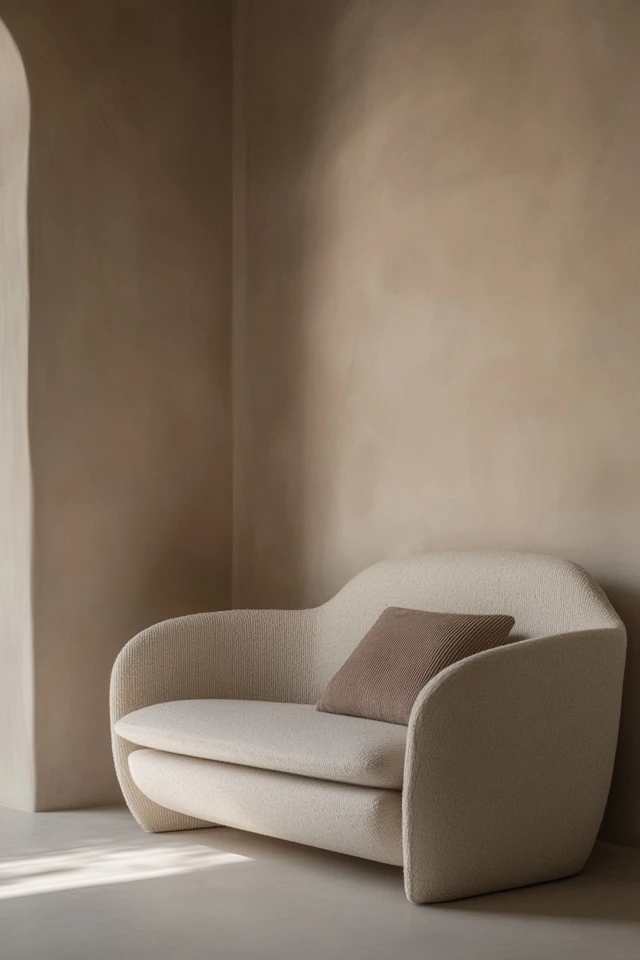
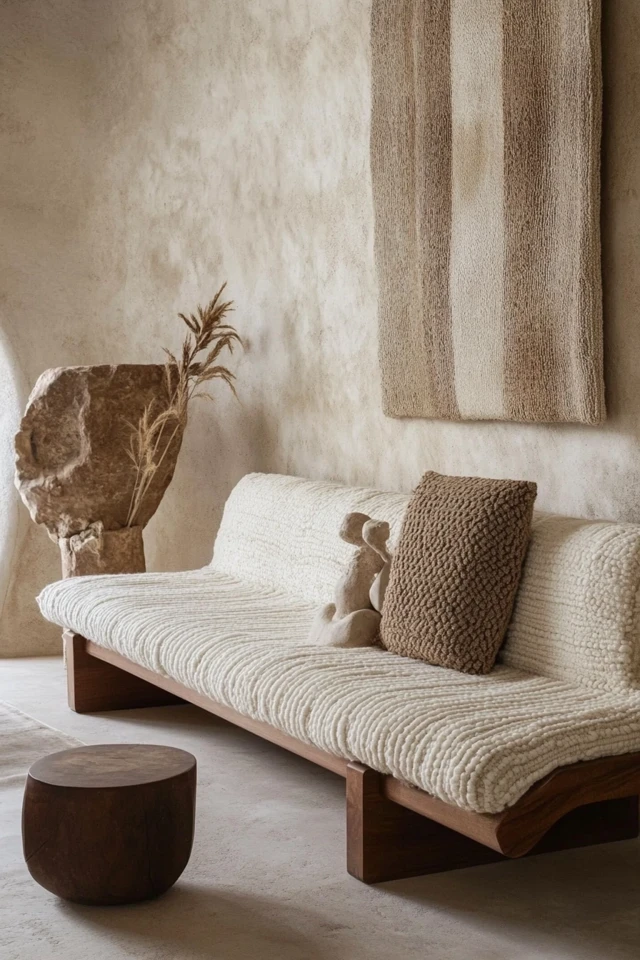
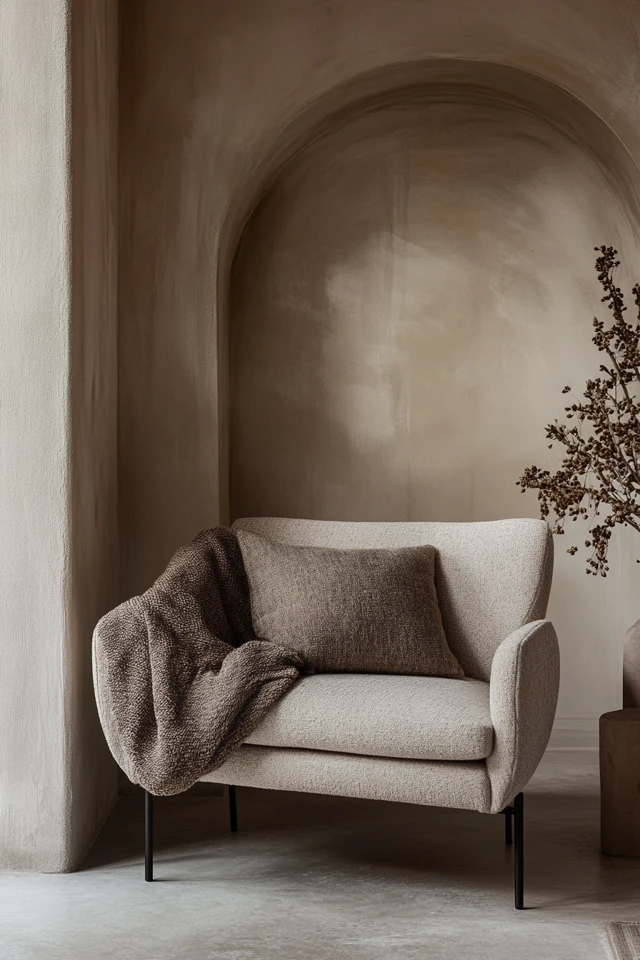
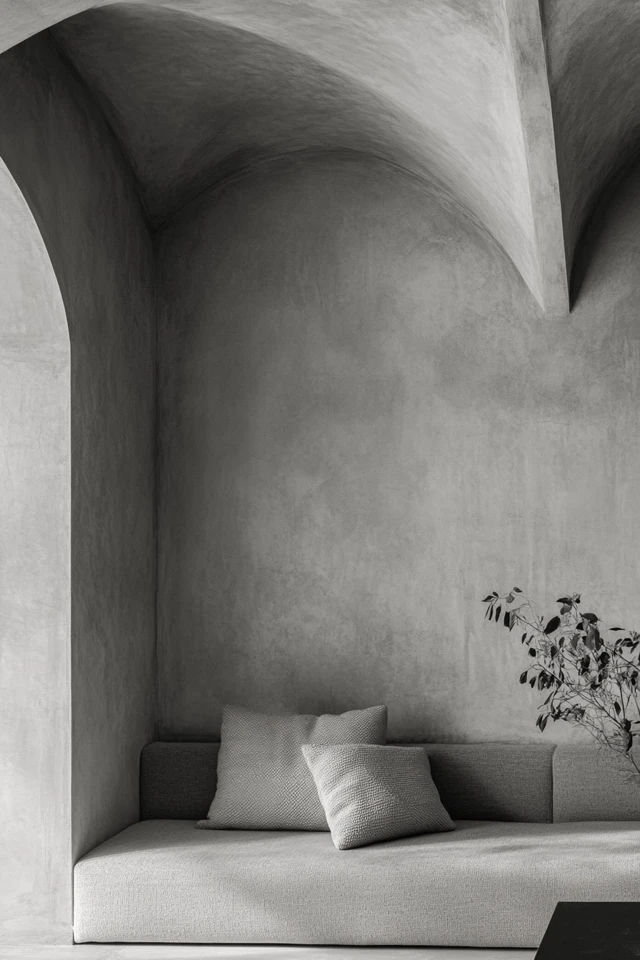
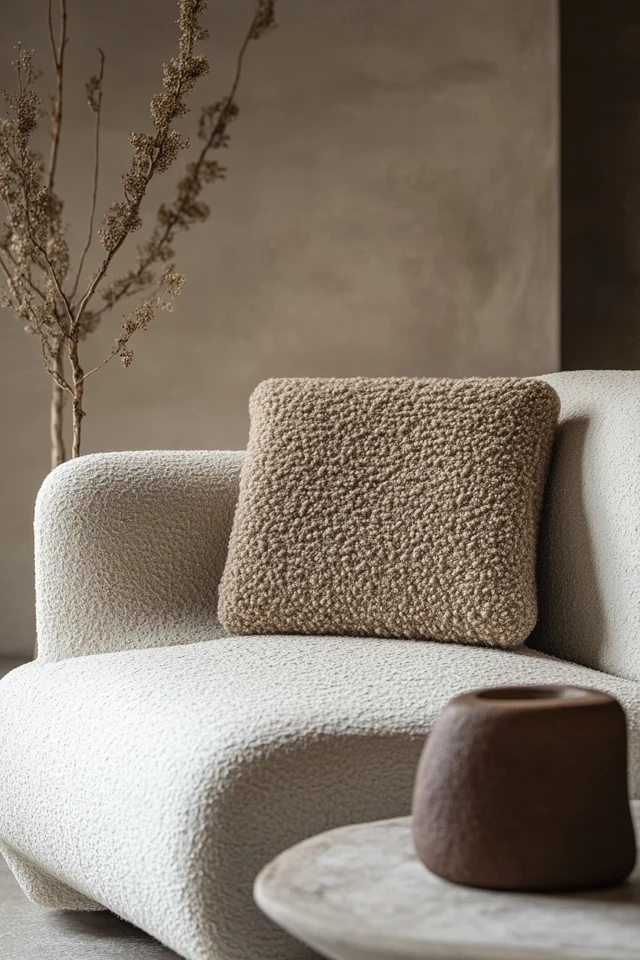
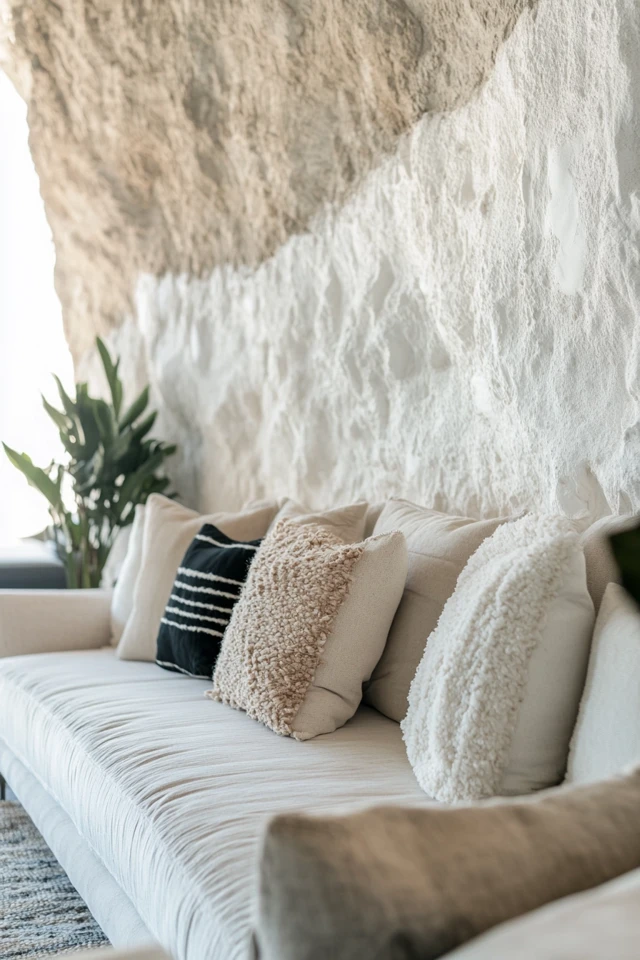
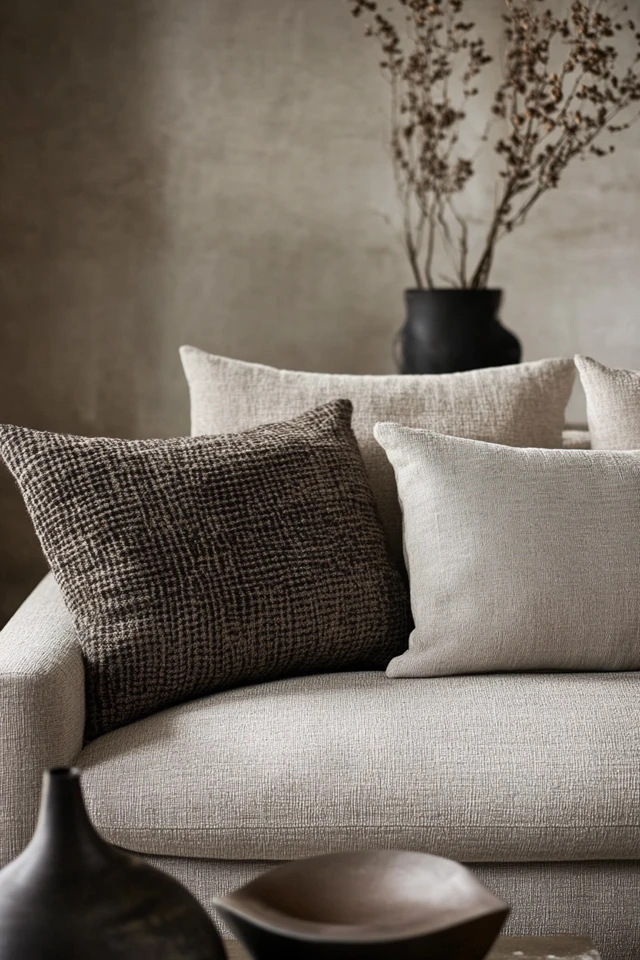
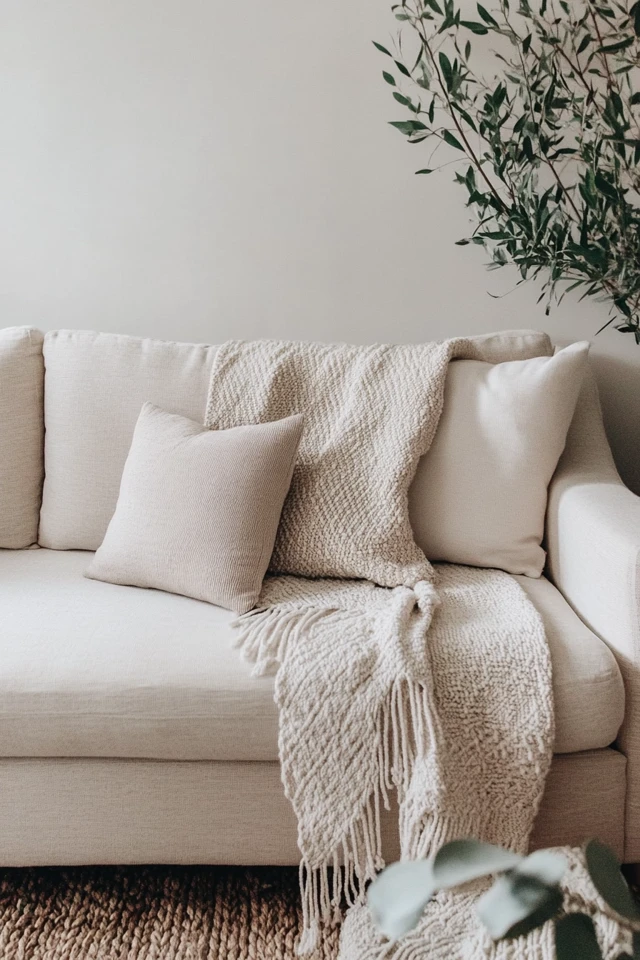
Conclusion
Styling a minimalist sofa with intentional accessories is about enhancing its clean, modern aesthetic while adding comfort and personality. By focusing on texture, balance, and simplicity, you can create a beautifully styled seating area that complements your home’s overall design.
What I love most about minimalist sofas is their versatility. With just a few thoughtful touches—like a textured throw, a couple of pillows, or a sleek coffee table—you can completely transform the space without overcomplicating the design.
So, start small. Add a neutral throw, a plant, or a piece of artwork, and see how your minimalist sofa evolves into the perfect centerpiece of your room.
FAQ
What color pillows work best with a minimalist sofa?
Neutral tones like white, beige, gray, or muted pastels work best. You can also add subtle patterns or textures for depth.
How do I choose the right size throw for my sofa?
A medium-sized throw (about 50” x 60”) is ideal for most sofas. It should be large enough to drape over one arm or fold neatly along the backrest.
Should I use bold colors to style a minimalist sofa?
Minimalist styling typically focuses on neutral and muted tones, but you can introduce a pop of color sparingly for contrast and interest.
How many pillows should I use on a minimalist sofa?
Two to four pillows are usually enough to add comfort and style without cluttering the sofa.
Where can I find minimalist accessories for my sofa?
Retailers like West Elm, CB2, IKEA, and H&M Home offer a wide range of minimalist pillows, throws, and decor.

